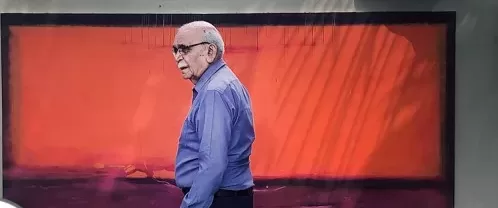the renowned art historian, left an indelible mark through his prolific writings, lectures, and vast knowledge of Indian art.
His passing on November 17 left a void in the art historical realm, where his expertise and eloquence, seemingly guided by the goddess of learning, Saraswati, captivated audiences and readers alike. His erudition spanned across diverse painting genres, effortlessly uncovering hidden details while embracing the grandeur of traditions. Brijinder Nath Goswamy scholarly pursuits extended to languages, seamlessly weaving verses from Urdu, Persian, Hindi, or Punjabi to illuminate visual imagery. He wasn’t just a scholar but a passionate connoisseur, his empathy evident in every exploration.
While Goswamy delved into myriad themes, his devotion lay with the Pahari art schools, notably the Guler family of painters such as Nainsukh, Manaku, and Pandit Seu. His groundbreaking monographs on Nainsukh (1997) and Manaku (2017) redefined the study of individual artists, dispelling the anonymity often associated with Indian art. His research, including the seminal essay on “Pahari Painting: Family as a Basis of Style,” revolutionized the understanding of painting lineages, likening it to the gharana system in music.
He continued to enrich the field with numerous volumes, curated exhibitions exploring themes like rasa, and reached wider audiences through regular newspaper columns. His final publication, “The Indian Cat: Stories, Paintings, Poetry, and Proverbs,” showcased his diverse interests. Goswamy’s legacy as a ‘people’s art historian’ endures, his generosity in sharing knowledge leaving an indelible mark.
The author reminisces about their encounter with Goswamy in the late 1960s, reflecting on the impact his research had on their understanding of Indian painting. A personal bond formed, enriched by shared ideas and exchanges, culminating in mutual appreciation for each other’s work. Goswamy’s invitation to speak at the launch of his book on Manaku further strengthened their bond, underscoring the profound influence of Goswamy’s work and personal connections on their artistic journey.
This piece, penned by an artist, poet, and critic, pays homage to Goswamy’s unparalleled contributions to indian art history and his lasting impact on those touched by his luminous persona.

